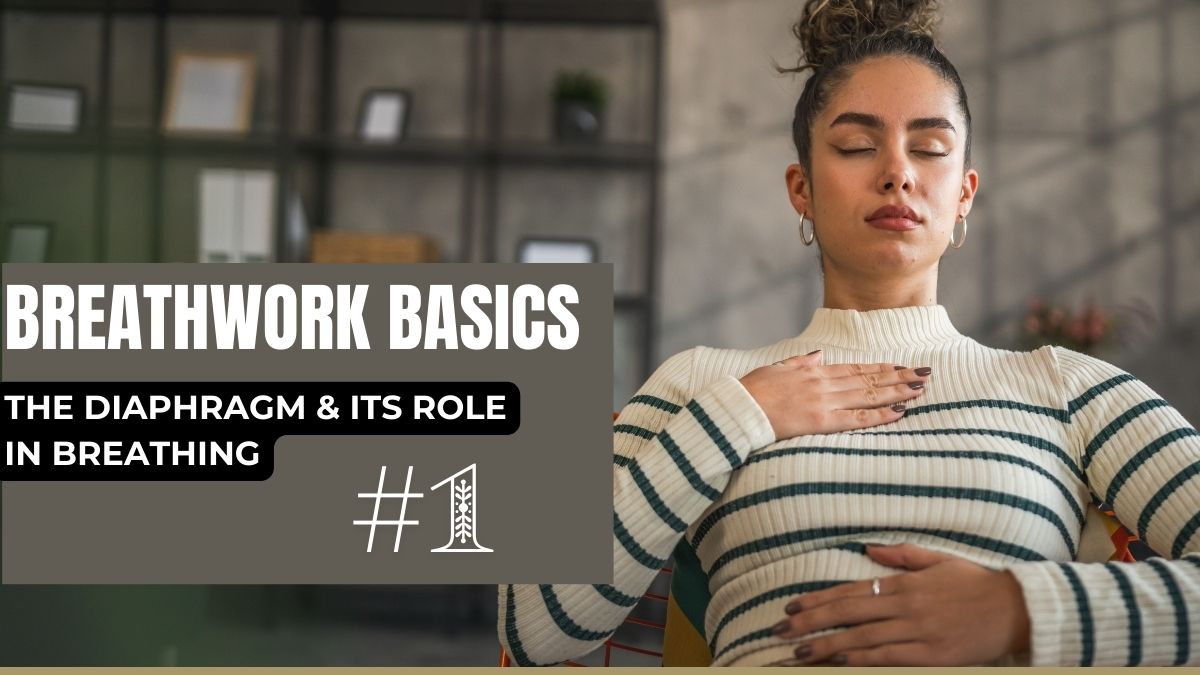Breathwork Basics 1: Apparently, We've All Forgotten How to Use Our Diaphragm

Welcome to my Breathwork Basics Learn how your diaphragm works, why it's essential, and how diaphragmatic breathing can enhance your wellbeing.
Breathwork Basics
Hi there, let's talk about something we do every single day but barely think about: breathing. Yep, that thing keeping us alive. Turns out, there’s a whole world out there dedicated to teaching us how to do it properly. Who knew?
Welcome to the inner workings of the diaphragm!
The Diaphragm: Not Just a Fancy Word for "Breathing Muscle"
First things first, let's clear up a little confusion. There are two types of diaphragms. One helps with breathing, and the other, well, let's just say it’s crucial for a different kind of safe activity. Today, we're focusing on the one that sits under your lungs, not the one that sits in your drawer.
This diaphragm is a large, dome-shaped muscle located right below your lungs. Think of it as the bouncer of your chest cavity, making sure everything stays in order and air gets in and out without any trouble.
The fact that it's a muscle is very important. It means we can consciously or voluntarily control it. Even though our breathing happens automatically, we can, if we want to, hold our breath or change the way we breathe.
6699395450a88_lg.jpg)
How the Diaphragm Makes Magic Happen
Inhalation: The Big Suck
When you breathe in, your diaphragm contracts and flattens out, moving downward towards your abdomen. This action creates a vacuum in your chest cavity. Imagine your chest cavity expanding like a balloon and pulling air into your lungs. It's like your own personal bellows system, and you didn’t even know it!
66993a1718c3f_lg.jpg)
Exhalation: The Big Flop
Exhaling is where the diaphragm shows off its relaxing skills. It returns to its dome-like shape, reducing the volume of the chest cavity. This increase in air pressure inside your lungs pushes the air out. It’s like deflating a balloon, only a lot less fun.
66993b12d35e9_lg.jpg)
The Diaphragm: Multitasking Like a Pro
Besides its Oscar-worthy performance in the breathing department, the diaphragm also helps with a bunch of other important tasks. It assists in increasing pressure inside your abdomen, which is pretty useful when you need to, you know, go. Yep, we're talking about urination and defecation here. It also helps prevent acid reflux by putting the squeeze on your oesophagus.
And let’s not forget, while the diaphragm is the star of the show, it's got a supporting cast of muscles in the chest wall and abdomen helping it out, especially during those deep, dramatic breaths we take when we're, say, watching a scary movie or trying to calm down after seeing our latest utility bill.
Oh, and here's a fun (read: terrifying) fact: if we didn’t have a diaphragm, all our organs would just fall all over the place. Seriously, it’s the muscle that hold everything together, keeping our guts from getting too cozy with our lungs.
Diaphragmatic Breathing: A Fancy Term for Breathing Better
So, how can you make this muscle work even better? Enter diaphragmatic breathing exercises. These can help strengthen your diaphragm, making it more efficient. Think of it as giving your diaphragm a little TLC.
The more attention you give it, the better it gets at doing its job, which means you might find yourself breathing easier and feeling less stressed. Win-win!
It's quite simple to do. Try this simple exercise. Lie on your back. Inhale through your mouth and feel your belly rise ( around the navel).
Exhale, let it flop and feel the belly drop.
66993d5178650_lg.jpg)
Diaphragm Drama: When Things Go South
Unfortunately, sometimes the diaphragm can run into issues. Hernias, nerve damage, and certain neuromuscular disorders can mess with its function. When the diaphragm’s not working right, it can lead to breathing difficulties and a whole host of other unpleasant symptoms. It’s a reminder of just how important this muscle is to our everyday health.
So there you have it, a deep dive into the unsung hero of our respiratory system. Next time you take a deep breath, give a little nod to your diaphragm, the muscle that never stops working, even when you’re busy worrying about everything else. And maybe, just maybe, try a little diaphragmatic breathing exercise.
Because breathing better is something we can all get behind.
If you want help with diaphragmatic breathing, it's the main technique we focus on in my transformational breath workshops and courses. Check them out here..
Sarah Jons, founder of The Breathwork Teachers, helps people transform their physical, mental, and emotional health through breathwork. With nearly 25 years of experience working and living in student residences at the London School of Economics, Sarah understands the pressures students face. After overcoming personal challenges and working as a Cognitive Hypnotherapist and Life Coach, she discovered the power of breathwork in 2012. In 2014, she co-founded The Big Breath Company, teaching breathwork up to facilitator level. In 2023, she launched The Breathwork Teachers, offering 1-to-1 sessions and on-demand workshops and for groups, teams, and student communities.
Categories: : Breathwork Basics
 Sarah Jons
Sarah Jons 